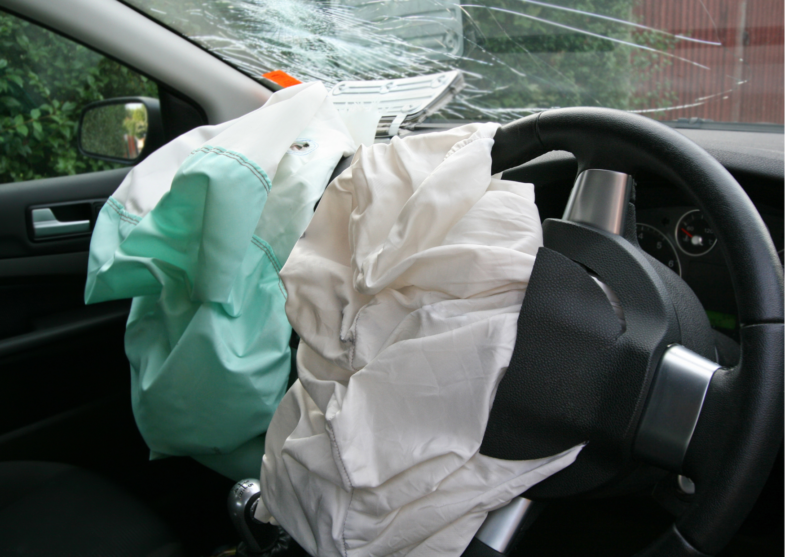Ryan Zavodnick | March 21, 2024 | Car Accidents

In the 1970s, vehicles started featuring airbags as an added safety feature. Since then, airbags have improved and are now a powerful addition to the protective features cars offer in the event of an accident.
You know your vehicle features airbags, but unless you’ve been in a collision, you’ve never experienced how airbags work to protect against serious injury. It’s beneficial to understand how airbags function and what causes them to deploy.
Understanding How Airbags Work in an Accident
Airbags are just one part of the multiple vehicle safety features. They serve an important function, as they deploy when a vehicle has suffered a crash to help protect the driver and passengers from sustaining severe injuries. Vehicles typically have airbags in several areas, including the steering wheel, the dashboard, and the sides of the car.
Cars are equipped with sensors throughout the outside of the vehicle. If you run into something, the sensors trigger the airbags to deploy. A signal is sent to the igniter, which sets off a reaction with two chemicals — sodium azide and potassium nitrate — which help inflate airbags in less than 1/20th of a second.
Because airbags are part of a host of protective vehicle features, they are designed to work best when used with seat belts. Seat belts hold you back, while airbags cushion the impact.
Speeds At Which Airbags Deploy
Airbags are meant to deploy during moderate and severe crashes. But what constitutes a “moderate” crash? A moderate crash may be less serious than you may believe.
In general, airbags may deploy when vehicles are traveling as slow as 10 to 16 miles per hour. If you collide with another vehicle or stationary object at these speeds, your airbags are likely to deploy to keep you safe.
While this may seem like a surprisingly low threshold for airbags, cars don’t need to be traveling at high speeds for accidents to be devastating. Without airbags, a crash at a seemingly slow speed is still enough to cause substantial injury.
Why Didn’t My Airbag Deploy?
In some car accidents, airbags fail to deploy. There may be several reasons for this.
It’s helpful to remember that airbags are not meant to deploy in every single type of accident. Therefore, if a crash is considered mild to moderate, airbags may not be necessary for protection, as seat belts may be sufficient.
In some rare cases, though, airbags are defective, causing failure in situations that otherwise would have required airbag deployment. When an accident is severe and airbags fail, injuries are more likely. In a situation like this, you may have a product liability claim against the manufacturer, so it’s helpful to seek legal guidance.
Greater Protection With Some Simple Airbag Safety Tips
Simply put, airbags are there for your protection. However, they can also cause harm under certain circumstances.
For this reason, it’s important to remember some safety tips to make the most out of your airbags while remaining safe, including:
- Wear Your Seat Belt: Airbags work best when drivers and passengers wear seat belts at all times.
- Distance Yourself From the Steering Wheel: Airbags can deploy rather quickly, so it’s best to keep a safe distance to ensure they deploy properly.
- Ensure children Ride in the Back: Children are best protected while riding in the back seat in a proper child seat.
Taking these precautions when you get behind the wheel can substantially decrease the likelihood of injury.
Seek Legal Assistance After a Collision
In the event of a collision involving airbags, do not hesitate to seek guidance from a qualified car accident attorney. A lawyer can review the details of your situation and provide advice and direction for your case.
Contact Our Car Accident Law Firm in Philadelphia Today To Get Help With Your Case
To learn more and get the help you deserve, call Zavodnick & Lasky Personal Injury Lawyers at (215) 875-7030 or contact us online.
You can also visit our law firm at 123 S Broad St #1220, Philadelphia, PA 19109.
